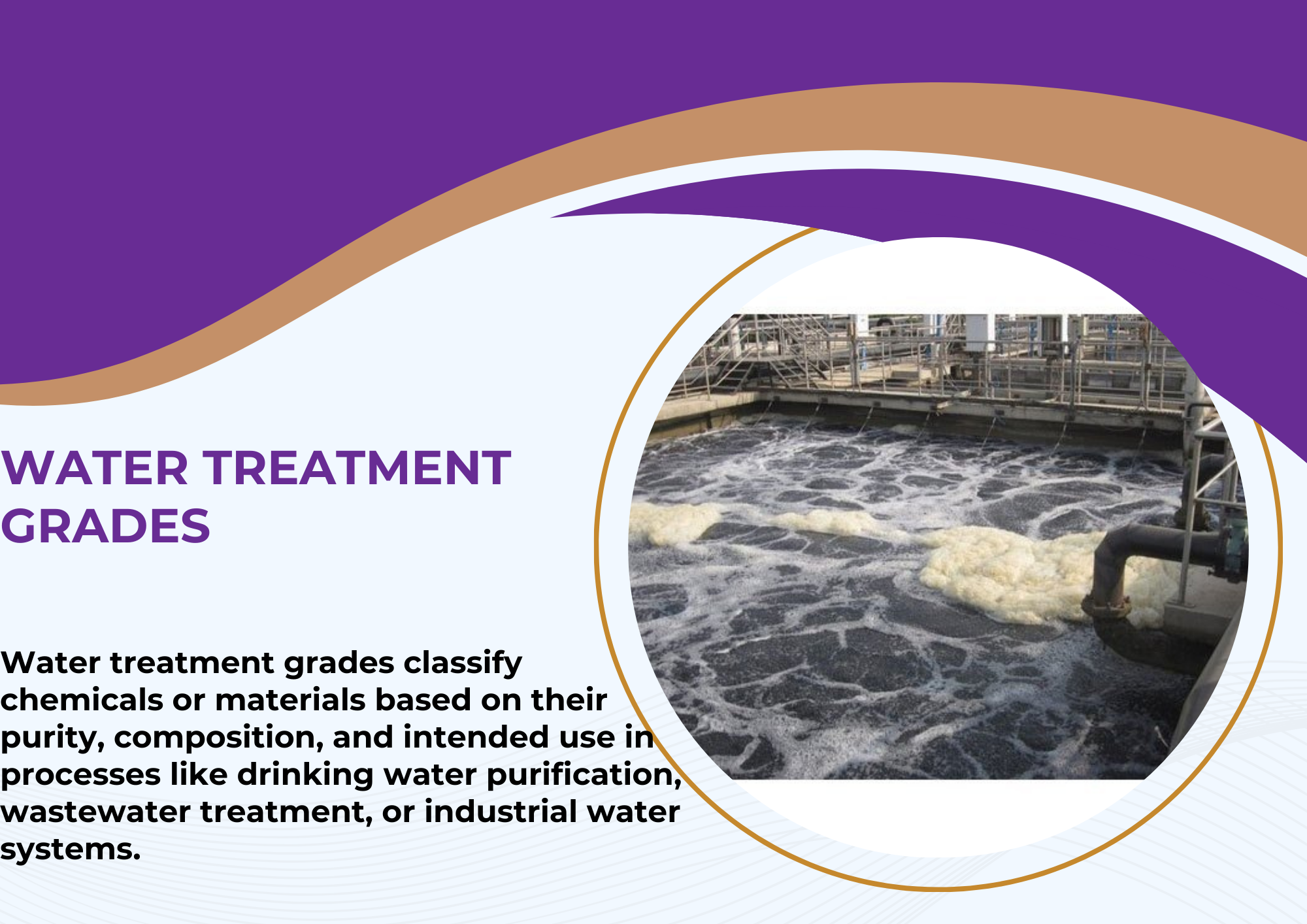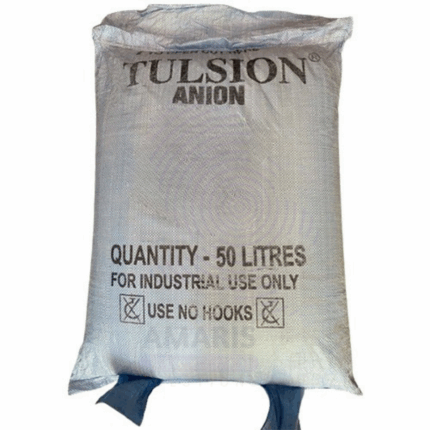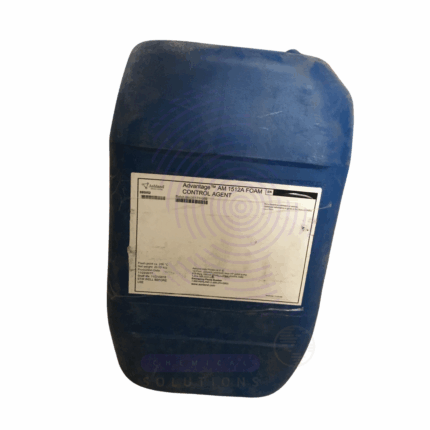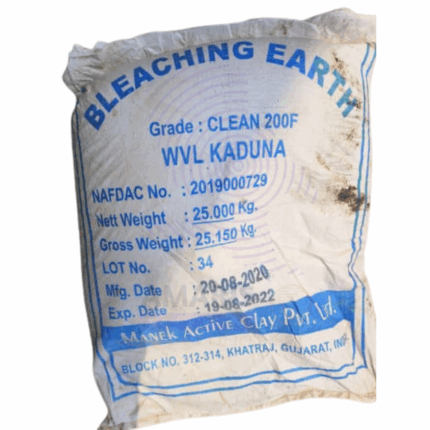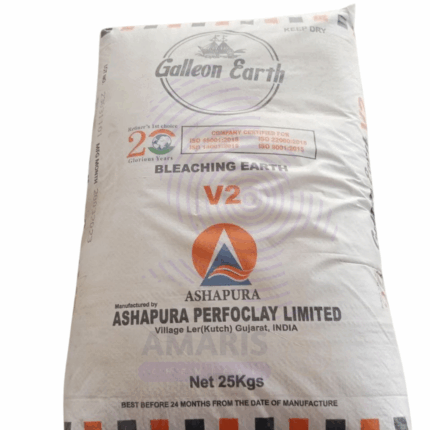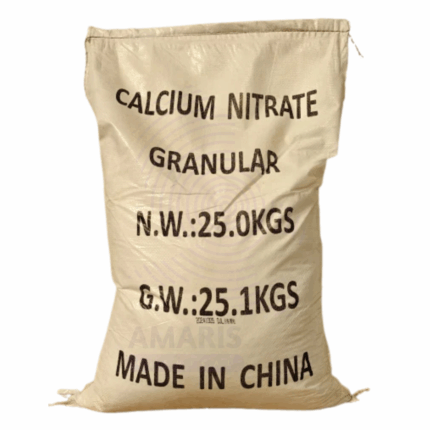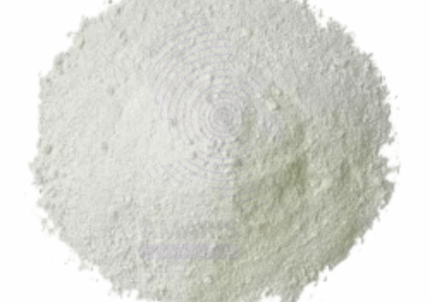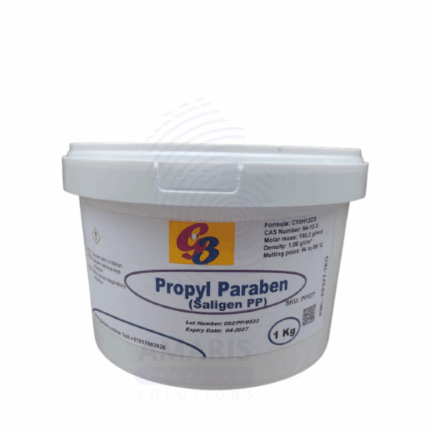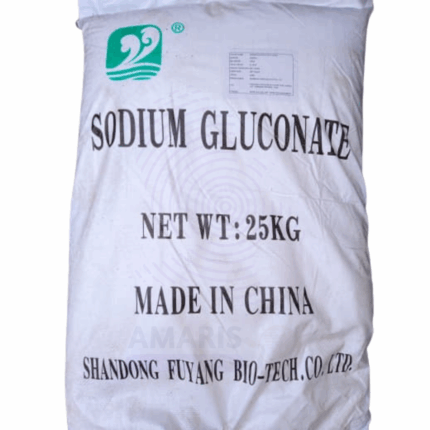Indion Cation Resin
Whatsapp Order
Indion Cation Resin is a synthetic ion exchange resin designed primarily for the removal of positively charged ions (cations) from water and various liquid streams. Typically composed of a sulfonated polystyrene-divinylbenzene (PS-DVB) copolymer, this resin features a highly porous bead structure with functional groups that exchange hydrogen or sodium ions for calcium, magnesium, iron, and other metallic cations. Available in different forms (strong acid cation, weak acid cation), Indion Cation Resin is widely used in water treatment, industrial processes, and purification systems.
Description
Table of Contents
Toggle
Indion Cation Resin
Primary Uses
- Water Treatment & Purification
- Water Softening: Removes hardness-causing ions (Ca²⁺, Mg²⁺) in residential, commercial, and industrial water systems, preventing scale buildup in boilers and pipes.
- Demineralization/Deionization: Used in combination with anion exchange resins to produce high-purity water by removing nearly all dissolved ionic contaminants.
- Boiler Feed Water Treatment: Ensures low conductivity and reduced scaling in high-pressure boilers by eliminating dissolved salts and metal cations.
- Condensate Polishing: Removes impurities from condensed steam in power plants to protect turbines and condensers from corrosion.
- Industrial Processing
- Chemical Manufacturing: Removes interfering cations in process streams to ensure reaction specificity, purity, and product yield.
- Pharmaceutical & Biotech Applications: Used in water-for-injection (WFI) systems and laboratory-scale purification where ultrapure water is essential.
- Food & Beverage Industry: Applied in beverage processing (e.g., sugar refining, juice clarification) to remove unwanted metallic ions that affect taste, color, and stability.
- Metal Recovery & Separation
- Hydrometallurgy: Extracts valuable metal ions such as copper, nickel, or rare earth elements from leach solutions during mining and ore processing.
- Electroplating Baths: Maintains bath chemistry by removing excess or contaminant metal ions.
Secondary Uses
- Environmental Remediation
- Wastewater Treatment: Removes heavy metals (Pb²⁺, Cd²⁺, Hg²⁺) from industrial effluents before discharge or recycling.
- Groundwater Clean-up: Deployed in environmental engineering to reduce toxic metal content in contaminated aquifers.
- Laboratory Applications
- Analytical Sample Preparation: Conditions and purifies samples by removing matrix interferences prior to spectroscopy or chromatography.
- Ion Chromatography Pre-treatment: Used to condition samples by removing cations that interfere with accurate separation and detection.
- Specialty Applications
- Catalyst Support: Acts as a solid support or medium for acid-catalyzed reactions in organic synthesis and fine chemical manufacturing.
- Electronics Industry: Helps produce ultrapure rinse water in semiconductor and electronics manufacturing.
KEY PRODUCT FEATURES
1. Basic Identification Attributes
- Chemical Name (IUPAC): Polystyrene sulfonic acid (crosslinked with divinylbenzene), hydrogen or sodium form
- Common/Trade Name: Indion Cation Resin
- CAS Number: 69011-20-7 (typical for sulfonated PS-DVB resins)
- HS Code: 3914.00.21 (Ion-exchange resins, based on polymers)
- Synonyms: Cation Exchange Resin; SAC Resin (Strong Acid Cation); WAC Resin (Weak Acid Cation); Polystyrene Sulfonate Resin
2. Physical & Chemical Properties
- Physical State: Spherical beads
- Color & Odor: Amber to golden brown (typical); odorless
- Bead Size: 0.3–1.2 mm (customizable depending on grade)
- Moisture Content: 45–60% (hydrated form)
- Ionic Form: Supplied in H⁺ or Na⁺ form
- Capacity: 1.8–2.2 eq/L (depending on resin type and condition)
- Swelling: ~5–10% upon regeneration (varies by grade)
- Solubility: Insoluble in water and common solvents
- Functional Group: Sulfonic acid (-SO₃H) for SAC resins; carboxylic acid (-COOH) for WAC resins
3. Safety & Hazard Attributes
GHS Classification
- Not classified as hazardous under GHS
Toxicity
- Non-toxic; not absorbed in biological systems
- Not intended for ingestion or inhalation of dry powder
Exposure Limits
- No specific occupational exposure limits established
4. Storage & Handling Attributes
Storage Conditions
- Store in original packaging, away from sunlight and extreme temperatures
- Keep hydrated; never allow resin to dry out completely
Container Type
- Supplied in polyethylene-lined fiber drums, HDPE containers, or bulk super sacks
Shelf Life
- Up to 5 years if stored properly in hydrated form
Handling Precautions
- Avoid impact or crushing to preserve bead integrity
- Use appropriate PPE when handling in bulk or during regeneration with acids/bases
5. Regulatory & Compliance Attributes
- Food & Pharmaceutical Grades: Certain Indion grades are compliant with USP, EP, and FDA regulations for use in water treatment and food processing
- REACH & RoHS Compliance: Many variants meet European regulatory standards
- NSF Certification: Select grades are certified for use in potable water systems
6. Environmental & Health Impact
- Biodegradability: Not biodegradable (synthetic polymer backbone)
- Ecotoxicity: Not inherently toxic to aquatic life in stable, bead form
- Bioaccumulation: Not bioaccumulative
- Disposal: Resin should be disposed according to local regulations; regeneration chemicals must be handled and neutralized appropriately
SAFETY HANDLING PRECAUTIONS
Safety Handling Precautions
PPE Required
- Gloves, safety goggles, and dust mask when handling in dry form or during transfer
- Apron and face shield during regeneration (acid/base handling)
Handling Guidelines
- Avoid mechanical stress or heat exposure
- Do not let resin dry out (resin performance degrades irreversibly when desiccated)
Storage Measures
- Store in moisture-retaining packaging
- Avoid storage near oxidizing agents or reactive chemicals
First Aid Measures
- Inhalation: If dust or fumes (from regeneration) are inhaled, move to fresh air; seek medical attention if irritation persists
- Skin Contact: Rinse with soap and water if irritation occurs; avoid prolonged contact with regenerant solutions
- Eye Contact: Flush eyes with water for at least 15 minutes; seek medical attention if irritation persists
- Ingestion: Not intended for ingestion; seek medical advice if swallowed
Firefighting Measures
- Fire Hazards: Not flammable; however, will emit toxic fumes (CO, CO₂, SOₓ) when burned
- Extinguishing Media: Use water spray, CO₂, dry chemical, or foam
- Special Precautions: Use SCBA and full protective gear; avoid inhaling combustion gases
Related products
Anion
Anions are negatively charged ions formed when an atom or molecule gains one or more electrons. They play vital roles in chemistry, biology, and industrial processes. Anions are key participants in ionic bonding, acid-base chemistry, and electrochemical reactions. Common anions include chloride (Cl⁻), sulfate (SO₄²⁻), nitrate (NO₃⁻), and phosphate (PO₄³⁻). Their behavior and interaction affect processes ranging from water treatment and agriculture to physiological functions and battery technology.
Anti Foam
Anti foams are chemical additives designed to reduce or prevent the formation of foam in industrial processes, manufacturing, and various formulations. Foam can interfere with operations such as mixing, filling, pumping, and heat transfer, leading to reduced efficiency or defects in products. Anti foams work by destabilizing foam bubbles, causing them to coalesce and collapse rapidly. They are widely used in industries including food and beverage, pharmaceuticals, wastewater treatment, paints and coatings, and chemical manufacturing. Different types of anti foams include silicone-based, mineral oil-based, and organic polymer-based formulations, chosen according to the specific application and process conditions.
Bleaching Earth
Bleaching Earth is a fine, highly adsorptive clay material derived primarily from bentonite or montmorillonite, and in some cases from attapulgite or sepiolite. It is typically activated using acid treatment to enhance its surface area and pore structure. It is widely used to remove color, contaminants, impurities, and odors from edible oils, fats, waxes, petroleum products, and various industrial fluids. Its high adsorption capacity, non-toxic nature, and effectiveness in filtration make it essential in food processing, chemical industries, cosmetics, and waste treatment applications.
Calcium Nitrate
Calcium Nitrate is a highly soluble, white crystalline salt composed of calcium and nitrate ions. It is commonly available as a tetrahydrate (Ca(NO₃)₂·4H₂O). Known for its excellent solubility in water, calcium nitrate is widely used as a fertilizer providing both calcium and nitrogen to plants. It improves soil structure, enhances nutrient uptake, and prevents disorders such as blossom-end rot in fruits. Beyond agriculture, calcium nitrate serves in wastewater treatment, concrete acceleration, and industrial chemical processes.
Prednisolone Sodium Phosphate
Prednisolone Sodium Phosphate is a water-soluble ester of prednisolone, a synthetic glucocorticoid steroid with potent anti-inflammatory and immunosuppressive effects. Its enhanced solubility makes it suitable for injectable formulations and rapid systemic action. It is commonly used to treat various inflammatory, allergic, and autoimmune conditions, offering effective modulation of immune responses and inflammation.
Propyl paraben
Propyl Paraben is a widely used preservative belonging to the paraben family, known for its antimicrobial properties. It is commonly employed to inhibit the growth of bacteria, mold, and yeast in cosmetic, pharmaceutical, and food products. Propyl Paraben is favored for its effectiveness, low toxicity, and compatibility with a broad range of formulations, helping extend product shelf life while maintaining safety.
Sodium Gluconate
Sodium Gluconate is a white, crystalline powder derived from gluconic acid and sodium salt. It is highly water-soluble, biodegradable, and non-toxic, widely used as a chelating agent, sequestrant, and buffering agent across various industries. Sodium Gluconate is favored for its excellent ability to bind metal ions, improve cleaning efficiency, and stabilize formulations. It finds extensive applications in construction, water treatment, food, pharmaceuticals, cosmetics, and textiles.
Vitamin B1 (Thiamine HCL)
Vitamin B1 Thiamine HCL is a water-soluble, stable salt form of vitamin B1 used widely in pharmaceuticals, nutraceuticals, and food fortification. It plays a critical role in energy metabolism by aiding carbohydrate breakdown and supports nervous system health. The hydrochloride form offers enhanced stability and solubility, making it suitable for oral supplements, injectables, and fortified foods.


 Preservatives(food)
Preservatives(food) Flavor Enhancers
Flavor Enhancers Acidulants
Acidulants Sweeteners
Sweeteners Antioxidants
Antioxidants Colorants(food)
Colorants(food) Nutraceutical Ingredients (food)
Nutraceutical Ingredients (food) Nutrient Supplements
Nutrient Supplements Emulsifiers
Emulsifiers
 Collectors
Collectors Dust Suppressants
Dust Suppressants Explosives and Blasting Agents
Explosives and Blasting Agents Flocculants and Coagulants
Flocculants and Coagulants Frothers
Frothers Leaching Agents
Leaching Agents pH Modifiers
pH Modifiers Precious Metal Extraction Agents
Precious Metal Extraction Agents
 Antioxidants(plastic)
Antioxidants(plastic) Colorants (Pigments, Dyes)
Colorants (Pigments, Dyes) Fillers and Reinforcements
Fillers and Reinforcements Flame Retardants
Flame Retardants Monomers
Monomers Plasticizers
Plasticizers Polymerization Initiators
Polymerization Initiators Stabilizers (UV, Heat)
Stabilizers (UV, Heat)
 Antifoaming Agents
Antifoaming Agents Chelating Agents
Chelating Agents Coagulants and Flocculants
Coagulants and Flocculants Corrosion Inhibitors
Corrosion Inhibitors Disinfectants and Biocides
Disinfectants and Biocides Oxidizing Agents
Oxidizing Agents pH Adjusters
pH Adjusters Scale Inhibitors( water)
Scale Inhibitors( water)
 Antioxidants(cosmetic)
Antioxidants(cosmetic) Emollients
Emollients Fragrances and Essential Oils
Fragrances and Essential Oils Humectants
Humectants Preservatives
Preservatives Surfactants(cosmetic)
Surfactants(cosmetic) Thickeners
Thickeners UV Filters
UV Filters
 Fertilizers
Fertilizers Soil Conditioners
Soil Conditioners Plant Growth Regulators
Plant Growth Regulators Animal Feed Additives
Animal Feed Additives Biostimulants
Biostimulants Pesticides (Herbicides, Insecticides, Fungicides)
Pesticides (Herbicides, Insecticides, Fungicides)
 Active Pharmaceutical Ingredients (APIs)
Active Pharmaceutical Ingredients (APIs) Excipients
Excipients Solvents(pharmaceutical)
Solvents(pharmaceutical) Antibiotics
Antibiotics Antiseptics and Disinfectants
Antiseptics and Disinfectants Vaccine Adjuvants
Vaccine Adjuvants Nutraceutical Ingredients (pharmaceutical)
Nutraceutical Ingredients (pharmaceutical) Analgesics & Antipyretics
Analgesics & Antipyretics
 Analytical Reagents
Analytical Reagents Solvents(lab)
Solvents(lab) Chromatography Chemicals
Chromatography Chemicals Spectroscopy Reagents
Spectroscopy Reagents microbiology-and-cell-culture-reagents
microbiology-and-cell-culture-reagents Molecular Biology Reagents
Molecular Biology Reagents Biochemical Reagents
Biochemical Reagents Inorganic and Organic Standards
Inorganic and Organic Standards Laboratory Safety Chemicals
Laboratory Safety Chemicals Specialty Laboratory Chemicals(Special Laboratory Equipment)
Specialty Laboratory Chemicals(Special Laboratory Equipment)
 Demulsifiers
Demulsifiers Hydraulic Fracturing Fluids
Hydraulic Fracturing Fluids Scale Inhibitors(oil)
Scale Inhibitors(oil) Surfactants(oil)
Surfactants(oil) Drilling Fluids
Drilling Fluids
 Dyes and Pigments
Dyes and Pigments Bleaching Agents
Bleaching Agents Softening Agents
Softening Agents Finishing Agents
Finishing Agents Antistatic Agents
Antistatic Agents
 Admixtures
Admixtures Waterproofing Agents
Waterproofing Agents Sealants and Adhesives
Sealants and Adhesives Curing Compounds
Curing Compounds Concrete Repair Chemicals
Concrete Repair Chemicals Anti-Corrosion Coatings
Anti-Corrosion Coatings
 Surfactants(cleaning)
Surfactants(cleaning) Builders
Builders Enzymes
Enzymes Solvents (Cleaning)
Solvents (Cleaning) Fragrances
Fragrances
 Electronic Chemicals
Electronic Chemicals Catalysts
Catalysts Lubricants
Lubricants Photographic Chemicals
Photographic Chemicals Refrigerants
Refrigerants Automotive chemicals
Automotive chemicals Pyrotechnic Chemicals
Pyrotechnic Chemicals
 Biodegradable Surfactants
Biodegradable Surfactants Bio-based Solvents
Bio-based Solvents Renewable Polymers
Renewable Polymers Carbon Capture Chemicals
Carbon Capture Chemicals Wastewater Treatment Chemicals
Wastewater Treatment Chemicals
 Pigments
Pigments Solvents(paint)
Solvents(paint) Specialty Coatings
Specialty Coatings Binders/Resins
Binders/Resins Additives
Additives Driers
Driers Anti-Corrosion Agents
Anti-Corrosion Agents Functional Coatings
Functional Coatings Application-Specific Coatings
Application-Specific Coatings
 Fresh Herbs
Fresh Herbs Ground Spices
Ground Spices Whole Spices
Whole Spices Spice Blends
Spice Blends Dried Herbs
Dried Herbs
 Leavening Agents
Leavening Agents Dough Conditioners
Dough Conditioners Flour Treatments
Flour Treatments Fat Replacers
Fat Replacers Decoratives
Decoratives Preservatives(baking)
Preservatives(baking)
 Plasticizers & Softeners
Plasticizers & Softeners Reinforcing Agents
Reinforcing Agents Adhesion Promoters
Adhesion Promoters Vulcanizing Agents
Vulcanizing Agents Antidegradants
Antidegradants Blowing Agents
Blowing Agents Fillers & Extenders
Fillers & Extenders Accelerators & Retarders
Accelerators & Retarders



